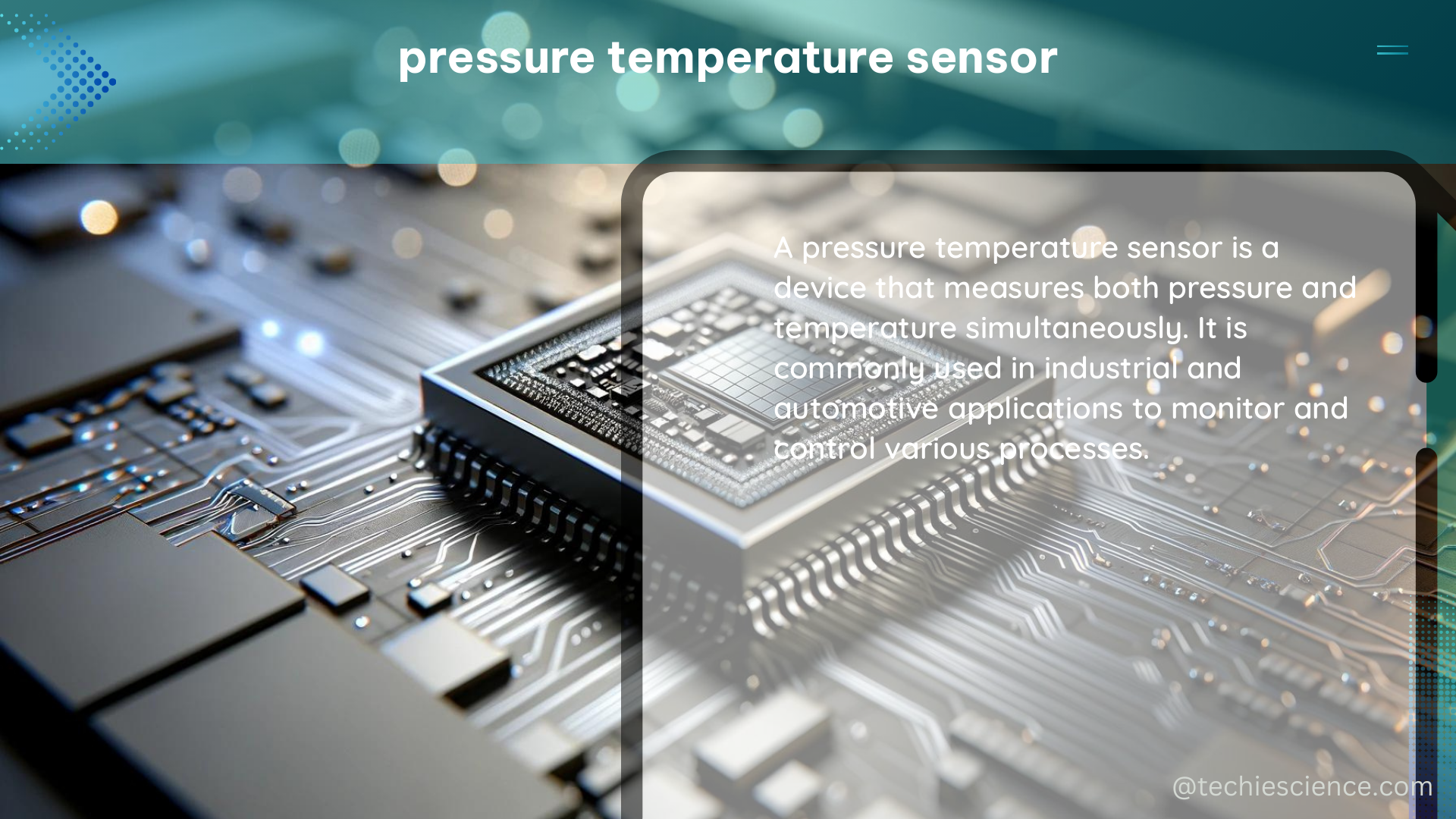Pressure and temperature sensors are essential components in a wide range of applications, from weather forecasting and medical diagnostics to robotics and smart packaging. These sensors play a crucial role in accurately measuring and monitoring physical parameters, enabling precise data-driven decision-making. In this comprehensive technical guide, we will delve into the intricate details of pressure temperature sensors, covering their technical specifications, drift detection and quantification, and design considerations for minimizing temperature drift effects.
Technical Specifications of Pressure Temperature Sensors
Pressure Range
Pressure sensors can measure a wide range of pressures, from as low as a few Pascals (Pa) to as high as thousands of Pascals or even higher, depending on the specific application. For example, the Honeywell HSCDRNN015PGAA5 pressure sensor can measure pressures ranging from 0 to 15 psi (0 to 103.4 kPa).
Temperature Range
Temperature sensors can operate across a vast temperature spectrum, from cryogenic levels to several hundred degrees Celsius. The Sensirion SHT35 temperature and humidity sensor, for instance, can measure temperatures ranging from -40°C to +125°C.
Accuracy
The accuracy of pressure and temperature sensors can vary depending on the sensor type and manufacturer. The Honeywell HSCDRNN015PGAA5 pressure sensor has an accuracy of ±0.25% full scale, while the Sensirion SHT35 temperature sensor has an accuracy of ±0.1°C.
Response Time
The response time of pressure and temperature sensors is another crucial specification. The Honeywell HSCDRNN015PGAA5 pressure sensor has a response time of less than 1 millisecond, while the Sensirion SHT35 temperature sensor has a response time of typically 8 seconds.
Drift Detection and Quantification

Sensor drift is a critical issue that can lead to inaccurate measurements over time. Researchers have developed advanced techniques to detect and quantify drift in pressure and temperature sensors.
Trinomial Probability Distribution-based Drift Detection
In a study published in Sensors and Actuators A: Physical, Pereira and Glisic proposed a novel drift detection method based on the evolution of parameters of a trinomial probability distribution. This method was used to detect and quantify temperature sensor drift in structural health monitoring applications.
The researchers used a probabilistic neural network as the nonlinear data-driven temperature prediction model and introduced a robust drift quantification method based on the evolution of parameters of a trinomial probability distribution. This approach was evaluated using real temperature data from a pedestrian bridge, spanning over seven years of the structure’s life.
Drift Quantification Metrics
The researchers used the following metrics to quantify the drift in temperature sensors:
– Drift rate: The rate of change in the sensor’s output over time, typically expressed in units per year.
– Drift magnitude: The total change in the sensor’s output over a given time period, typically expressed in the same units as the sensor’s output.
– Drift uncertainty: The uncertainty associated with the drift quantification, which can be used to assess the reliability of the drift estimates.
Design Considerations for Minimizing Temperature Drift Effects
Material selection is a crucial design factor that can impact a pressure sensor’s temperature drift and hysteresis. The choice of materials for the sensing element, membrane, and packaging can significantly influence the sensor’s performance under varying temperature conditions.
Sensing Element Materials
For piezoresistive pressure sensors, materials like silicon, Constantan alloys, and tantalum nitride thin films are commonly used due to their low temperature coefficient of resistance (TCR). These materials help minimize the impact of temperature changes on the sensor’s resistance, reducing the overall temperature drift.
Membrane/Diaphragm Materials
The membrane or diaphragm of a pressure sensor is another critical component that affects temperature drift. Silicon is the preferred choice for the membrane/diaphragm due to its extremely low and stable temperature coefficient of expansion (TCE), which helps maintain the sensor’s dimensional stability under temperature variations.
Packaging Materials
The packaging materials used for pressure sensors also play a role in minimizing temperature drift. Ceramics like alumina are commonly used due to their stable mechanical and hermetic sealing properties, as well as their low TCE values, which help maintain the sensor’s structural integrity and prevent thermal-induced deformations.
Temperature Compensation Techniques
Temperature compensation is a vital technique for combating drift in pressure and temperature sensors. By incorporating temperature compensation algorithms, the sensor’s output can be stabilized in the face of changing temperatures, resulting in improved accuracy and better repeatability.
References
- Pereira, M., & Glisic, B. (2023). Detection and quantification of temperature sensor drift using probabilistic neural networks. Sensors and Actuators A: Physical, 323, 113205.
- A Multiparameter Pressure–Temperature–Humidity Sensor Based on a Thin-Film Resistive Structure. (2019). Sensors, 19(3), 649.
- Pressure Sensor Temperature Drift – Eastsensor Technology. (2022). Retrieved from https://www.eastsensor.com/blog/pressure-sensor-temperature-drift/
- Technical Overview – National Weather Service. (n.d.). Retrieved from https://www.weather.gov/asos/TechnicalOverview.html

The lambdageeks.com Core SME Team is a group of experienced subject matter experts from diverse scientific and technical fields including Physics, Chemistry, Technology,Electronics & Electrical Engineering, Automotive, Mechanical Engineering. Our team collaborates to create high-quality, well-researched articles on a wide range of science and technology topics for the lambdageeks.com website.
All Our Senior SME are having more than 7 Years of experience in the respective fields . They are either Working Industry Professionals or assocaited With different Universities. Refer Our Authors Page to get to know About our Core SMEs.